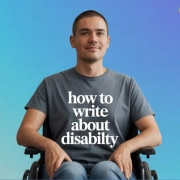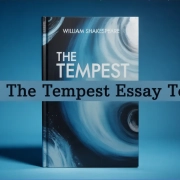The Key Difference Between Plot And Story: A Writer’s Guide
When someone asks about the difference between plot and story, they’re really pointing to a subtle but important distinction in how narratives work. Many readers, writers, or listeners use those terms almost interchangeably, but knowing how plot and story differ can sharpen your insight into novels, films, or even a podcast you enjoy. In this article, I’ll walk you through what each term means, how they relate, and how the difference between plot and story helps you spot stronger storytelling in fiction or any narrative medium. If you’re interested in improving how you organize ideas within essays, explore our guide on how to write an analytical essay
Key Takeaways
- Knowing the difference between plot and story sharpens how we see fiction because while a story shows what happens and why it matters emotionally, a plot arranges those events in a way that keeps readers or viewers engaged.
- A story covers the full emotional and thematic journey—including characters’ goals, motivations, and backstory—whereas a plot focuses on the sequence of events that bring those emotional and moral threads to life.
- The core elements of plot—inciting incident, rising action, climax, falling action, and resolution—provide a structure that gives forward momentum to the broader story.
- Studies in narrative structure and narrative reversals show that consistent patterns in plot design and well-timed turning points make stories more satisfying and emotionally resonant for audiences.
- Writers and readers can separate the two by asking what the emotional core is (story) and what order the events unfold (plot), ensuring that structure and emotion work together to create a cohesive, meaningful experience.
What Is a Story?
A “story” is the broad sweep of what happens, who it happens to, and why it matters emotionally. It is not just a list of events; it includes characters, motivations, emotional arcs, themes, and the sense you get of meaning.
Here are the key features of a story:
- Characters & motivations: A story asks questions like, “What does the protagonist want or fear?” Writers aiming to strengthen character depth can benefit from our detailed piece on how to write a character analysis essay
- Emotion & theme: The story is about more than events; it’s about how we feel, what we reflect on (for example, injustice or redemption).
- Continuity beyond structure: The story might include flashbacks, backstory, or parallel threads not strictly in time order.
So when you follow a story, you care about the protagonist, how they react, what they long for, and the emotional journey. A child hearing a folk tale doesn’t just recall the order of events; they remember how they felt, who the key players were, and what the tale tried to say about life.
What Is a Plot?
A plot is a more precise notion: it is the sequence of events that make up the story as arranged by the author (or screenwriter). Plot is how the story is constructed and delivered. It deals with structure, causation, pacing, and turning points.
Important elements of plot include:
- Inciting incident: the moment that sets things in motion
- Rising action and tension: building up conflicts and obstacles
- Climax: the turning point where tension peaks
- Falling action and resolution: how things settle afterward
A plot gives momentum and direction. For example, in Jaws, the plot moves from attacks to threat escalation to the final showdown with the shark. The screenwriter arranges those events to maximize suspense, surprises, and pacing.
In novels like The Shawshank Redemption, the plot covers events such as how the protagonist is sentenced, how he navigates prison life, the escape plan, and the outcome; these are structural skeletons that support a wider narrative. To see how structured writing enhances clarity, check out essay structure and organization
Difference Between Plot and Story
There is a difference between story and plot, and we shall go through them in detail below.
Story Is the Broader Narrative
- The story includes everything: what happened in the past (backstory), internal feelings, moral lessons, themes, and more.
- It is less concerned with “order” or “structure” than with meaning and emotional depth.
- The story is what you hold in mind: characters’ struggles, emotional stakes, thematic arcs, even when some pieces aren’t shown explicitly.
Plot: Is the Sequence of Events
- Plot is how the story is told: the order, the pacing, the cause-and-effect chain.
- A plot may reorder events (flashbacks, nonchronological order) to create surprise or tension.
- Plot points are tools the screenwriter or novelist uses to guide the reader’s attention and emotional response.
Key Differences and Why They Matter
| Aspect | Story | Plot |
|---|---|---|
| Scope | Broad, includes emotion, theme, backstory | Narrower: structure of events |
| Order | May be flexible (not strictly chronological) | Usually arranged for effect |
| Purpose | To evoke emotion, theme, and character depth | To provide momentum, clarity, and suspense |
| Component | You can have a good story even with a weak plot | A weak plot may weaken the impact, even if the story idea is strong |
Understanding the difference matters because when writing or analyzing fiction, you can assess whether the plot is serving the deeper story (and not getting in its way). A well-crafted plot supports the emotional and thematic weight of the story, making for a more satisfying whole. Similarly, clear organization strengthens academic writing. Read more in steps to writing an essay
Why People Often Confuse the Two
Many writers and readers mix up plot and story because they overlap tightly in narrative talk. People often say “that’s a great story” when they really mean “that was an engaging plot.” Both terms are used interchangeably in screenwriting or writing groups. But that can obscure clarity: one person may be referring to the structural chain of events, another to the emotional journey.
Also, because storytelling is natural and intuitive, we instinctively think in terms of stories (characters, meaning, change), but when we teach or analyze writing (especially in screenwriting), we emphasize plot (sequence, structure, turning points). This dual usage leads to a blur.
How Plot and Story Work Together
Plot and story don’t compete; they collaborate. The story provides raw emotional and thematic material; the plot arranges it so it resonates.
Here’s how they relate:
- The protagonist’s goal is part of the story; the plot forces obstacles to challenge it.
- Conflicts within the story (e.g., injustice, internal fear) become plot events.
- The narrative arc (character development) is part of the story; the plot reveals it step by step.
- A satisfying conclusion (resolution) must honor both the emotional and structural needs.
Research in narrative structure confirms that stories across cultures often follow recognizable structural shapes. In a large-scale text analysis of 40,000 works, scientists found recurring narrative elements like setup, buildup, and resolution that define core narrative structures (PMC article). This suggests that most writers, consciously or not, organize their stories along similar plot patterns.
A complementary study published in Science Advances showed that narrative reversals, key turning points within the plot, often predict how successful a story becomes with audiences (Science Advances study). The findings imply that effective plotting not only strengthens story flow but also heightens emotional impact.
Together, these studies back up what writers have long sensed: without a story, a plot feels hollow, but without a plot, a story lacks forward momentum.
Examples from Fiction and Film
Let me show you how this difference plays out in real work:
- Jaws (film): the story is about fear, human vulnerability, and survival; the plot is how the shark attacks escalate, the chase builds, culminating in the final showdown.
- The Shawshank Redemption: the story centers on hope, injustice, and redemption; the plot is how Andy and Red navigate prison life, Andy’s escape, and the outcome.
- A novelist may begin the story with a dramatic event in the middle (flashforward), but the plot rearranges things so that rising action and climax build logically to a satisfying resolution. The story works whether or not events are shown chronologically, but the plot is the planned structure.
In screenwriting, a screenwriter might decide to reveal some backstory via flashbacks out of order; this is a plot decision. The underlying story (who the character is, what they want) remains coherent no matter how ordered.
How to Identify Plot and Story in Your Reading or Writing
Here are a few tips to separate plot from story as a reader or writer:
- Ask: What is the emotional or thematic core? That’s the story.
- Ask: What order are events shown? And why? That’s the plot.
- Label plot points: inciting incident, rising action, climax, resolution.
- Notice flashbacks or scene rearrangements; those are plot devices.
- Check if the plot supports the story (does it deepen conflict, highlight character change?).
- See whether characters’ goals and internal struggles (story) are honored by what happens (plot).
When you watch a movie or read a novel next, try mentally separating the story (why you care) from the plot (what happens next).
Conclusion
Now that you’ve seen how a story encompasses character, emotion, theme, and a broader narrative, while a plot is the ordered sequence of events, you can better appreciate and evaluate fiction. The difference between plot and story is subtle but powerful: plot is the structural path, story is the deeper journey. Together, they create a compelling narrative that pulls you in, connects you with characters, and leaves you thinking. Next time you read a novel or listen to a podcast, see whether you can spot how plot supports story, and you’ll feel more confident in your sense of what makes a “good story.”
Difference Between Plot And Story FAQs
What’s the difference between plot and story in simple terms?
A story is what happens (including character, emotion, theme), while a plot is how those things happen in sequence, arranged by the author.
Can a story exist without a plot?
You might imagine a story as an idea, characters, conflicts, and themes, but without a plot (no ordered events), it lacks structure and momentum. So in practice, a story needs some plot to feel complete.
How do screenwriters use plot and story differently?
Screenwriters often sketch a plot skeleton (three acts, plot points) first, then layer in story elements (protagonist’s emotional arc, themes, subplots). The plot gives shape to the story.
Why is it important to know the difference between plot and story?
Knowing the distinction helps you analyze fiction with clarity, spot where a plot may be weak even if the story idea is good, and improve your own writing by aligning structure with emotional depth.
Through my engaging and informative blog posts, I aim to provide helpful tips on topics such as essay writing, research skills, and academic planning, empowering students to thrive in their academic pursuits.
academhelper.com academhelper.com
"Looking for a Similar Assignment? Get Expert Help at an Amazing Discount!"








